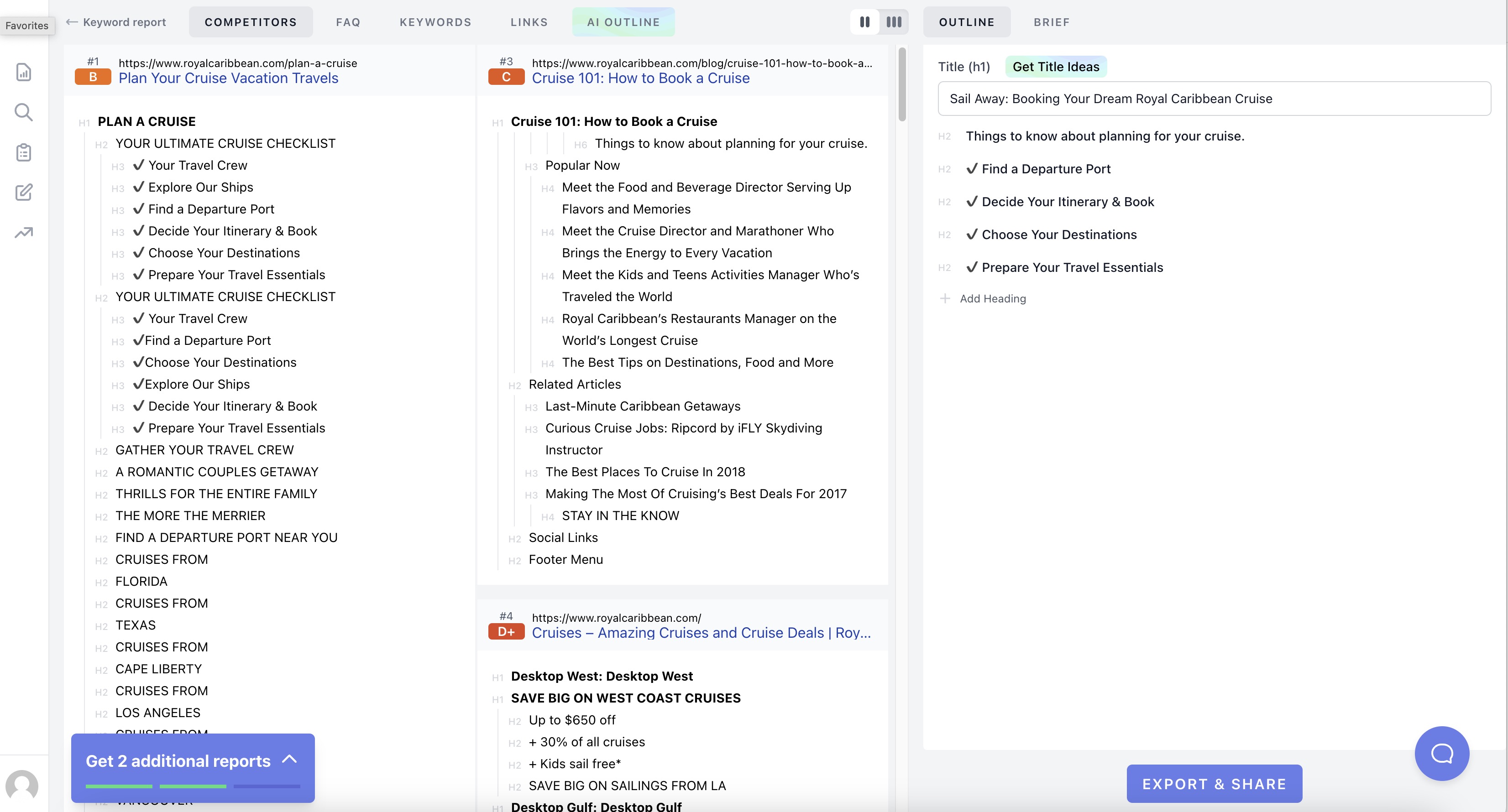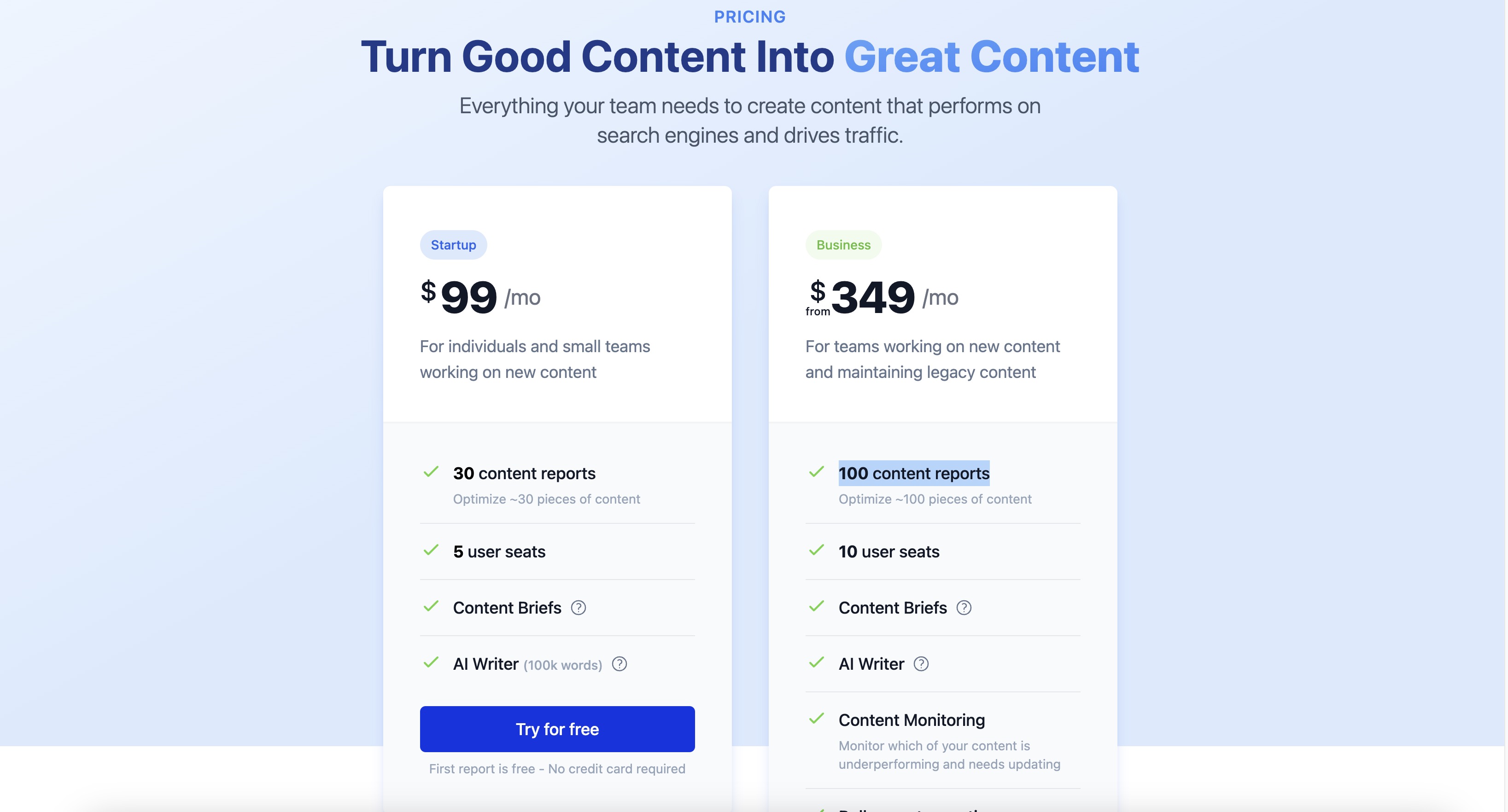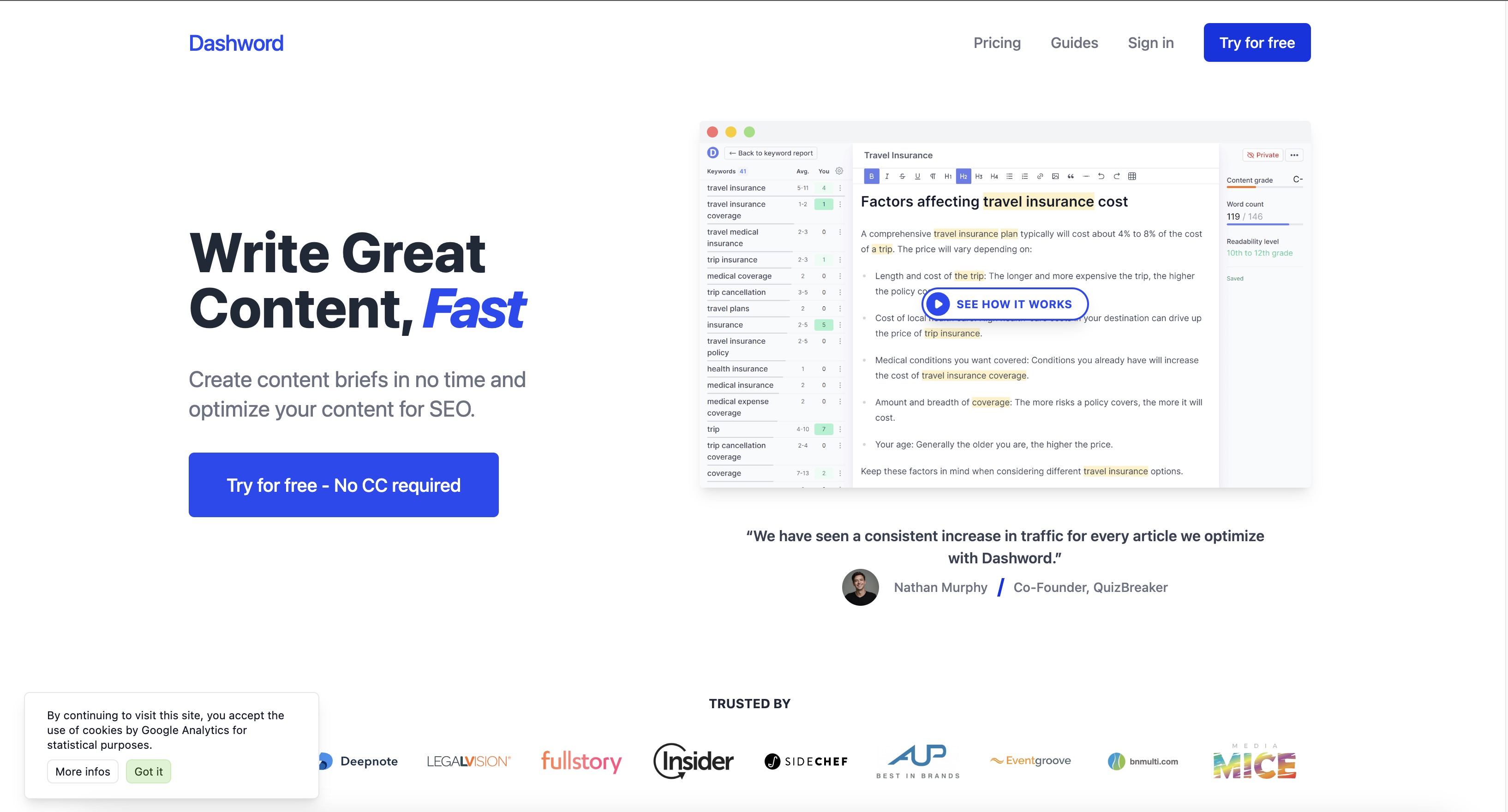TechRadar Verdict
Pros
- +
Easy to use
- +
Available from any browser
- +
The trial package gives you valuable insight into what the package offers
Cons
- -
The pricing strategy is wrong
- -
Slight learning curve
- -
There's more than SEO for content creators to consider
Why you can trust TechRadar
New tools are constantly emerging in content creation that promise to streamline the process, enhance quality, and attract more visitors to your website.
One such tool is Dashword, which has gained popularity among content creators for its capability to optimize content for search engines (SEO). Dashword is a powerful tool that leverages AI and machine learning algorithms to analyze search engine results and identify the characteristics of top-performing content. By providing detailed insights and recommendations, Dashword helps writers and marketers optimize their content to improve its relevance, increase its visibility on search engines, and attract more website traffic.
With Dashword, you can quickly identify the keywords, phrases, and topics most relevant to your target audience and create content that resonates with them. Whether you’re a blogger, a content marketer, or an SEO professional, Dashword is an essential tool that can help you take your content to the next level.
Understanding the strengths and weaknesses of any software before incorporating it into your workflow is crucial. In this blog post, we will explore the advantages and disadvantages of using Dashword to help you decide if it’s the right tool for your content creation arsenal.
- Interested in Dashword? Check out the Dashword website.
Features

Dashword is a versatile tool that provides a comprehensive solution for content creation. Its user-friendly interface allows easy access to a range of features. Dashword assists in generating ideas for topics and content briefs. Additionally, it offers a keyword research tool that optimizes your content for search engines by identifying valuable keywords. These keywords can be integrated into your content to enhance its visibility.
Furthermore, Dashword includes a content brief builder feature that analyzes your competitors' content and identifies critical sections that could benefit your content. You can select these sections to add to your content outline and get advice on possible titles. Moreover, Dashword provides frequently asked questions about your topic that can be answered in your content to benefit your readers.
Dashword's top strengths include its comprehensive keyword analysis, which is more advanced than simple keyword suggestions. It provides valuable insights into how often to use certain keywords, their relevance, and where to place them within your content. This level of detail guarantees that your content is fully optimized for search engines.
Another one of Dashword's strengths is its user-friendly interface. It makes content optimization accessible to everyone, regardless of their SEO knowledge. Its clear layout and guidance simplify the process of optimizing your content.
How does Dashword use AI?
Without the help of AI, Dashword wouldn't be possible. The service integrates AI into its various features to enhance the user experience. For instance, Dashword uses AI to analyze the content of your competitors on a particular topic. This analysis helps you gain insights into what kind of content is already ranking well, and which topics you might need to cover in your own writing. Based on this analysis, Dashword suggests an outline for your content brief to ensure that it covers all the necessary aspects and helps you create a comprehensive piece.
Dashword also leverages the power of AI to provide an interactive interface that enables you to add, edit, and organize the elements of your content brief. This feature saves you a lot of time that you would have spent manually researching and organizing your brief.
Finally, the AI writing tool is designed to assist you in writing about a particular topic, from start to finish.
Installation, setup, and compatibility
Dashword's SEO content optimization lets you enhance your content from any web browser and device. You can also use a Dashword plugin to access some of its tools directly within Google Docs.
Getting started with Dashword is easy, despite the term "installation." The process is straightforward because there is no traditional software to install. You can access Dashword entirely online, making it available from anywhere at any time.
To start with Dashword, open your preferred web browser and navigate to the Dashword website. On the Dashword homepage, look for a registration or sign-up option, usually a button labeled "Sign Up," "Get Started," or "Try for Free." Dashword offers different subscription plans, so choose the one that best fits your needs.
During registration, you'll be asked to provide basic information such as your name, email address, and password for your new Dashword account. After submitting the registration details, Dashword will send a confirmation email to the address you provided.
Once your account is confirmed, you can log in to Dashword using your email and password. The Dashword dashboard is your command center, where you can manage your content projects, monitor performance, and access the tool's various features.
To start with Dashword, create a new project by selecting "New Project" or "Create Project." This will open up a setup wizard or dialog box that guides you through entering the initial details about your content project. This may include naming your project, defining target keywords, and setting up other parameters Dashword will use to analyze and suggest content improvements.
Once your project is set up, you can explore the power of Dashword, using its user-friendly interface to delve into capabilities like keyword analysis, competitor content comparison, content scoring, and optimization suggestions. If you need assistance, Dashword's help resources or customer support are just a click away.
Plans and pricing

There are currently two subscription packages available for Dashword: Startup and Business. However, the lack of more packages is one of the most concerning things about the Dashword service.
The Startup package costs $99 per month and is ideal for small teams and individuals. It allows you to create up to 30 content reports per month and grants access to the AI writer tool for up to 100,000 words. Additionally, you get unlimited content briefs with content outlines, and this package is for five user seats.
The Business package, which costs $349 per month, is suitable for larger teams. It offers up to 100 content reports for ten user seats and access to unlimited AI writing capabilities and content briefs. Furthermore, this package includes exclusive features like existing content monitoring, bulk reports creation, API access, and single sign-on (SSO) capabilities.
If you want to try the service before purchasing, you can sign up for a free trial of either package without providing your credit card details. The trial includes access to one content report.
Final verdict
Dashword would quickly get a five-star rating if money weren't an issue. However, due to the current pricing structure, it only deserves 3.5 stars. The individual package at $99 monthly seems unreasonable, especially when similar tools are available for less. Additionally, specific tools and a monthly usage limit are restricted. The business package at $349 per month also has usage limits, which doesn't make sense. These subscription models make the service expensive for individuals, small businesses, and even larger businesses that must generate more than 100 monthly content reports. A happy medium would be to offer cheaper subscriptions and remove the monthly limits on existing packages.
Beyond price, Dashword is easy to start and mostly easy to use. However, expect a slight learning curve to get the most out of the service. Once you spend the time to learn everything there is to know about Dashword, you should find success.
Two final issues need to be considered when using Dashword. Firstly, it heavily relies on Search Engine Optimization (SEO). While SEO is vital, creating content that connects with readers is equally important. There is a possibility of focusing too much on optimization and losing the authentic voice that resonates with your audience. Moreover, there is an overemphasis on competition. Even though competitor analysis can be helpful, there is a chance of focusing too much on what others are doing. This could result in everyone saying the same thing, reducing originality and creativity.
Dashword is a service worth considering. Its free trial makes it even more appealing, as it won't cost you anything to take it for a test drive. Dashword could be the right choice, depending on your situation and background. Just be aware of its pricing and baffling limitations.
More from TechRadar Pro
- See our best on-page SEO tool of the year
- Also read more on how we test, rate, and review products on TechRadar
Bryan M. Wolfe is a staff writer at TechRadar, iMore, and wherever Future can use him. Though his passion is Apple-based products, he doesn't have a problem using Windows and Android. Bryan's a single father of a 15-year-old daughter and a puppy, Isabelle. Thanks for reading!

